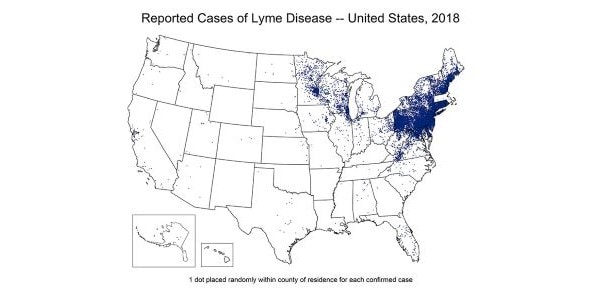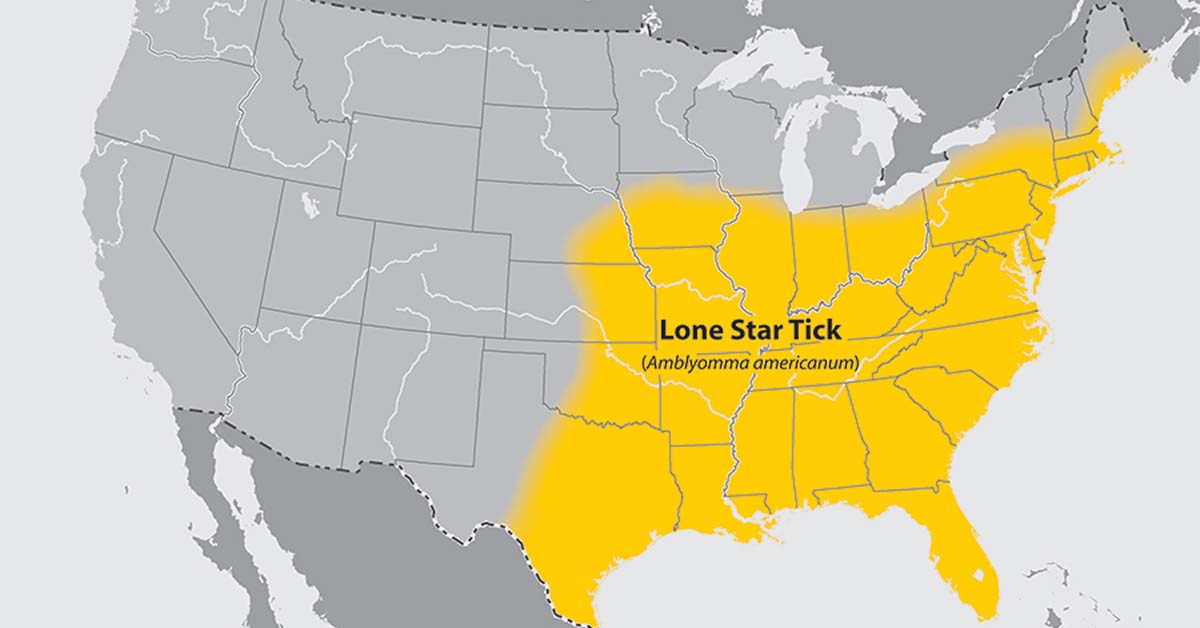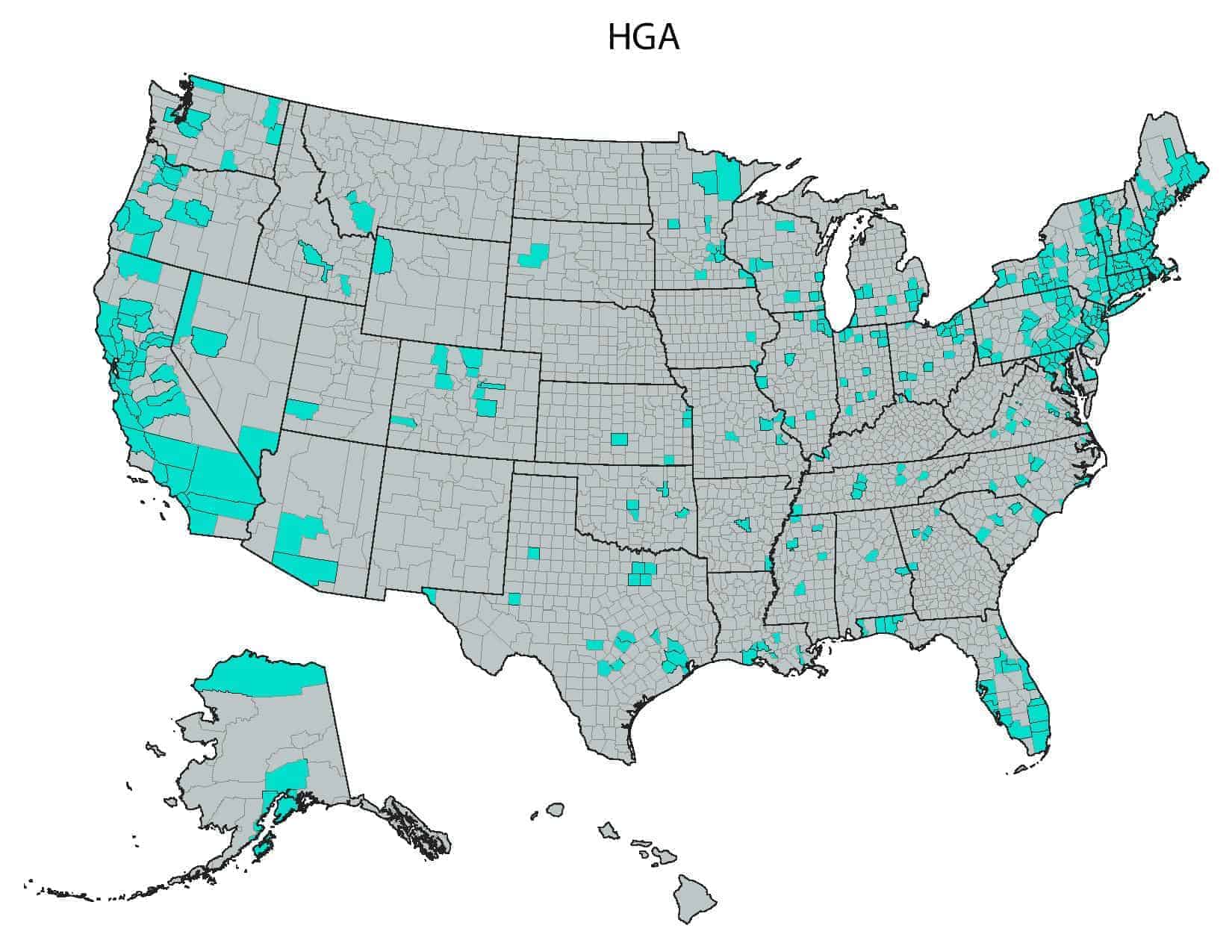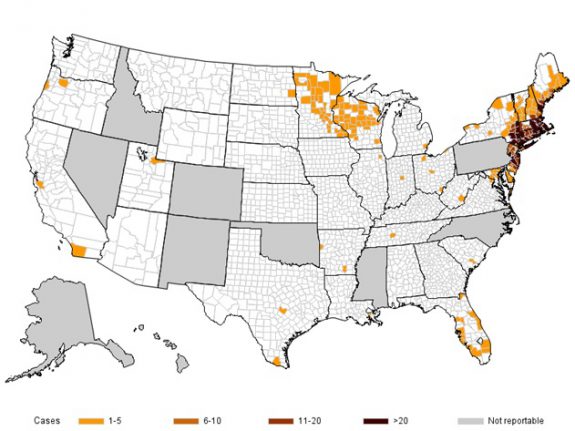
Tick-borne illnesses have become an increasing concern in the United States, with rising cases reported in recent years. These illnesses are caused by pathogens transmitted through tick bites and can cause serious health risks. To help educate, we've added a list of the common tick-borne illnesses found domestically.
When spending time in areas known to have ticks, it's best to prepare ahead of time. Be sure to wear long, bright colored clothing and check for ticks often.
For further protection, check out our new product Tick Tape Wrap.
Lyme Disease:

Lyme disease is the most common and well-known tick-borne illness in the United States. It is caused by the bacterium Borrelia burgdorferi and transmitted primarily by black-legged ticks (commonly known as deer ticks). These ticks are most commonly found in the Northeastern and upper Midwestern states.
Number of Cases:
There are an estimated 300,000 new case of Lyme Disease each year in the United States.
Symptoms:
Symptoms of Lyme disease can vary, and generally show up in stages within 3 to 30 days after the tick bite. The most characteristic symptom of Lyme Disease is a "bullseye" skin rash. Other symptoms include fatigue, fever, and joint pain. In severe cases, people may even develop neurological symptoms, heart problems, or Lyme arthritis. The severity of symptoms largely depends on how long the disease goes untreated.
The good news is that, in most cases, ticks must be attached to you for 36-48 hours before the Lyme disease-causing bacteria can be transmitted, so it’s important to take the proper precautions and check yourself after being outdoors in tick-prone areas.
Treatment:
After symptoms arise, Lyme disease can be treated with an antibiotic for around 10 to 14 days. Although it’s not backed by research, many people believe they have long-term symptoms from an earlier Lyme disease infection – referred to as “chronic Lyme Disease”.
If you believe you are at risk of Lyme disease, be sure to consult a medical professional for the best course of action.
Rocky Mountain Spotted Fever (RMSF):

RMSF is caused by the bacterium Rickettsia rickettsii and is transmitted by several tick species in the United States, including the American dog tick, the brown dog tick, and the Rocky Mountain wood ticks.
Number of Cases:
There are an estimated 2,000 cases of Rocky Mountain Spotted Fever in the United States each year.
Symptoms:
Symptoms usually appear within a week of a tick bite and include fever, headache, rash, muscle pain, and fatigue. After a few days, a rash usually develops starting around the wrists and ankles and symptoms generally increase in severity. Left untreated, Rocky Mountain spotted fever can become severe and patients often require hospitalization.
Treatment:
Unlike Lyme disease, which requires a prolonged attachment period to spread the disease, Rocky Mountain spotted fever can spread from a tick in as little as 2 hours.
Early diagnosis and prompt treatment with antibiotics are essential to recovery. The most common treatment is a course of antibiotics and, if started within 5 days of symptoms showing, the prognosis is generally good.
Alpha-Gal Syndrome:

Alpha-Gal syndrome isn’t an infection, it’s actually an allergy to mammalian meat (red meat). And it has recently been discovered that this syndrome can be transmitted by the Lone Star tick, although other ticks haven’t been ruled out.
Number of Cases:
There are an estimated 35,000 cases of Alpha-Gal Syndrome reported each year in the United States alone. This number is up from only 12 cases in 2009. Although it's still not certain the exact cause of each case.
Symptoms:
Symptoms of Alpha-Gal Syndrome are similar to other allergic reactions and can include hives, nausea and vomiting, heartburn, diarrhea, shortness of breath, swelling of the lips, throat and tongue, dizziness or faintness and severe stomach pain. These symptoms usually appear 2-6 hours after eating meat or dairy products, and can worsen in severity with each subsequent exposure.
Treatment:
There is no treatment for Alpha-Gal syndrome, but many people carry Epinephrin to reduce any anaphylaxis that may be caused by the allergy.
Although there is no known cure for the syndrome, it’s believed that people may recover fully within 1-2 years if there are no more tick bites.
Ehrlichiosis and Anaplasmosis:

Both Ehrlichiosis and Anaplasmosis are bacterial infections transmitted through tick bites, and are now the second most common tick-borne illnesses reported in the United States. Symptoms of both diseases are similar to Lyme disease and are transmitted by the same deer ticks that can also carry Lyme disease.
Number of Cases:
There are an estimated 2,000 cases of Ehrlichiosis and Anaplasmosis in the United States each year.
Symptoms:
Symptoms can include fever, chills, headache, muscle aches, and fatigue – generally showing 1 to 2 weeks after a tick bite. The key difference is that these diseases do not cause a telltale rash, such as Lyme Disease and Rocky Mountain spotted fever.
Treatment:
Early treatment is key, since untreated cases can become severe. Again, the good news is that if it’s treated early, most illnesses are cured within 3-10 days of antibiotic treatment.
Babesiosis:

Babesiosis is rare but sometimes severe illnesses caused by microscopic parasites of the genus Babesia and is transmitted by the same ticks that transmit Lyme disease.
Number of Cases:
Only around 50,000 cases are diagnosed in the United States each year. Most of those cases are acquired in the Northeastern United States.
Symptoms:
Ticks must be attached for 24 hours before the parasite is spread to the host. Symptoms can range from mild to severe and include fever, fatigue, muscle aches, and anemia, with symptoms showing typically within 1 to 4 weeks after the tick bite. In some cases, complications such as organ failure can occur, especially in individuals with weakened immune systems.
Treatment:
Treatment typically involves a combination of antibiotics and antiparasitic medications.
With that potential risks that come from tick bites, we believe it's important to take the precautions necessary to repel ticks. To see how Tick Tape Wrap works, visit our How it Works page.

